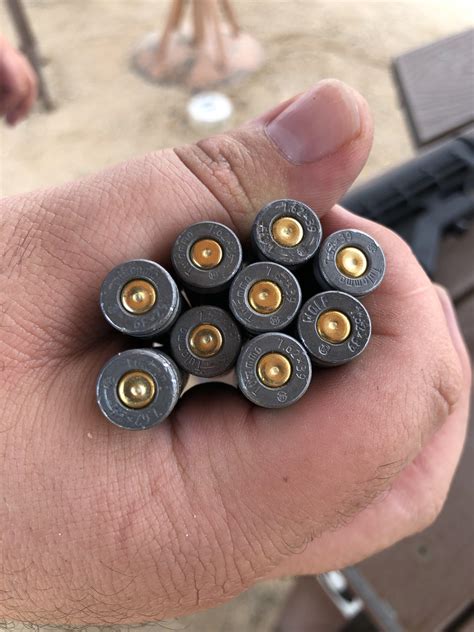Light Primer Strikes: How to Diagnose and Fix Them
Light primer strikes are a frustratingly common problem for reloaders. Instead of a clean, crisp ignition, you get a weak strike that fails to reliably detonate the primer, leading to misfires or squib loads – both serious safety hazards. This article will guide you through diagnosing and fixing light primer strikes, ensuring safer and more reliable reloading.
What Causes Light Primer Strikes?
Several factors can contribute to light primer strikes. Understanding these causes is the first step toward resolving the issue.
1. Insufficient Firing Pin Force:
This is often the most common culprit. A weak firing pin spring, worn firing pin, or excessive friction in the firearm's mechanism can all reduce the force delivered to the primer. This reduced force results in a light strike, sometimes even a failure to dent the primer cap at all.
2. Improper Headspace:
Incorrect headspace, where the cartridge case isn't seated correctly in the chamber, can prevent the firing pin from making proper contact with the primer. This can be due to excessive headspace (the cartridge is too loose) or, less commonly, insufficient headspace (the cartridge is too tight). Both scenarios hinder reliable ignition.
3. Bent or Damaged Firing Pin:
A bent or damaged firing pin will not deliver the necessary force consistently to the primer. Over time, the firing pin can become worn or damaged, impacting its ability to strike the primer squarely and with sufficient force.
4. Primer Issues:
While less common, the primers themselves can contribute to light primer strikes. This could be due to substandard primers, damaged primers (e.g., dented or crushed), or improperly seated primers in the cartridge case.
5. Dirty or Fouled Firearm:
A dirty or heavily fouled firearm can impede the smooth operation of the firing pin, reducing its impact force on the primer. Excessive fouling can increase friction, making it harder for the firing pin to deliver a forceful enough blow.
Diagnosing Light Primer Strikes:
Identifying the root cause is crucial. Here's a systematic approach:
1. Inspect the Cartridge Cases:
Examine the fired cases for light primer dents. A faint or shallow indent indicates a light strike. Compare these to cases fired with known good function. The difference will be apparent.
2. Check the Firing Pin:
Carefully inspect the firing pin for any signs of damage, bending, or wear. Look for any burrs or imperfections that could hinder its function.
3. Examine the Primer Seating:
Ensure primers are correctly seated in the cartridge cases. Improper seating can create inconsistencies in the primer-firing pin contact.
4. Assess Your Reloading Process:
Double-check your reloading techniques to rule out errors in primer seating depth or any other steps that could indirectly affect primer ignition.
5. Test with Different Ammunition:
Try different brands of factory ammunition to determine if the problem lies within the firearm itself or the handloaded ammunition.
Fixing Light Primer Strikes:
Once you've identified the cause, you can take appropriate action.
1. Replace the Firing Pin Spring:
If the firing pin spring is weak, replace it with a new one. This is often a simple and cost-effective solution.
2. Replace the Firing Pin:
If the firing pin is damaged or worn, replace it with a new one. Ensure it's correctly installed.
3. Clean and Maintain the Firearm:
Regular cleaning and maintenance are essential to prevent fouling from impacting the firing pin's operation.
4. Check Headspace:
If you suspect headspace issues, have a gunsmith check and adjust it as needed. This requires specialized tools and expertise. Improper headspace adjustment can render your firearm unsafe.
5. Switch Primer Brands:
If you suspect primer issues, try a different brand of primers known for consistent performance.
6. Ensure Proper Primer Seating Depth:
Use a consistent and accurate primer seating tool to ensure primers are seated correctly in the cartridge cases.
Frequently Asked Questions (FAQs):
Can light primer strikes damage my firearm?
While a single light primer strike might not cause immediate damage, repeated light strikes can potentially damage the firing pin or other parts of the firearm’s mechanism over time. It also significantly increases the risk of misfires or squib loads, which can be dangerous.
Are light primer strikes always a serious problem?
Not necessarily. Sometimes, a single light primer strike can be attributed to a minor anomaly. However, consistent light strikes indicate a serious problem that requires immediate attention.
How do I know if it’s a light primer strike or a bad primer?
Inspect the primer. A light primer strike usually leaves a very light indentation. A bad primer may not show any indentation at all, or the primer itself might be visibly damaged.
By systematically diagnosing and addressing the underlying causes of light primer strikes, you can ensure the safe and reliable function of your firearms and reloading process. Remember, firearm safety is paramount. If you are unsure about any of these steps, consult a qualified gunsmith.

